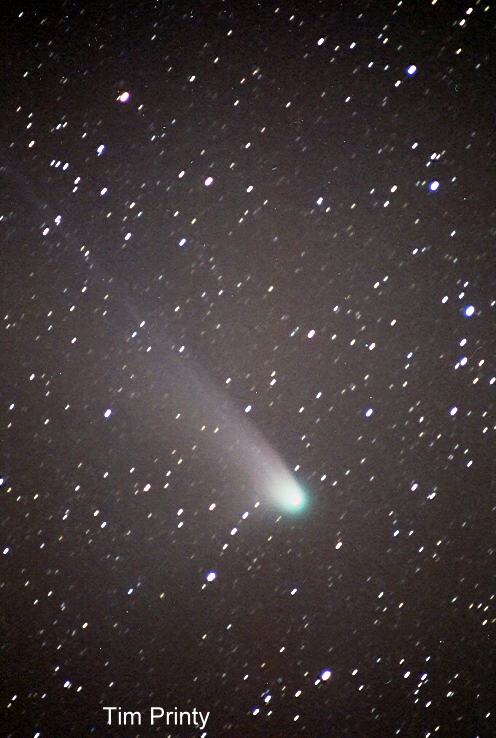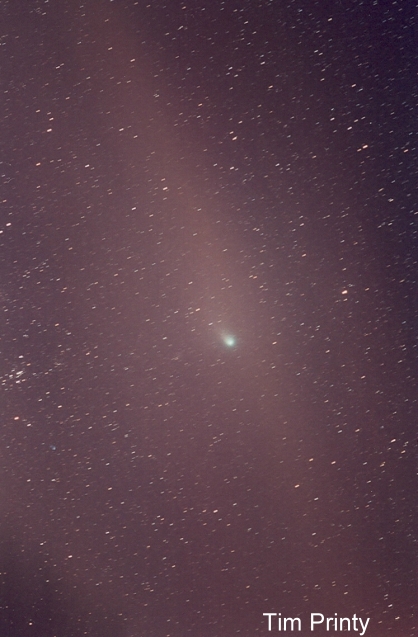
Comet NEAT 2001Q4: May 2004
Discovered in late 2001, comet NEAT (Near Earth Asteroid Telescope) had the earmarks of a pretty nice comet in the late spring of 2004. Early predictions gave a peak magnitude of about +1 but that seemed overly optimistic. The comet would only approach within just under one astronomical unit (AU) of the sun and the earth distance would only be about 0.34 AU. As perihilion approached the comet failed to follow it's light curve and by early 2004, predictions of peak brightness dropped to +2 to +3. Still, the comet had promise for northern observers as it would be high in the evening sky in mid-May.
I first located and photographed the comet on May 7th. High cirrus clouds interfered but I was still able to capture this image using a 200mm F2.8 lens, Kodak supra 400 film and a ten minute exposure.

On May 10th, I captured the comet using a 200mm F2.8 lens, Kodak Supra 400 film and a 15 minute exposure.
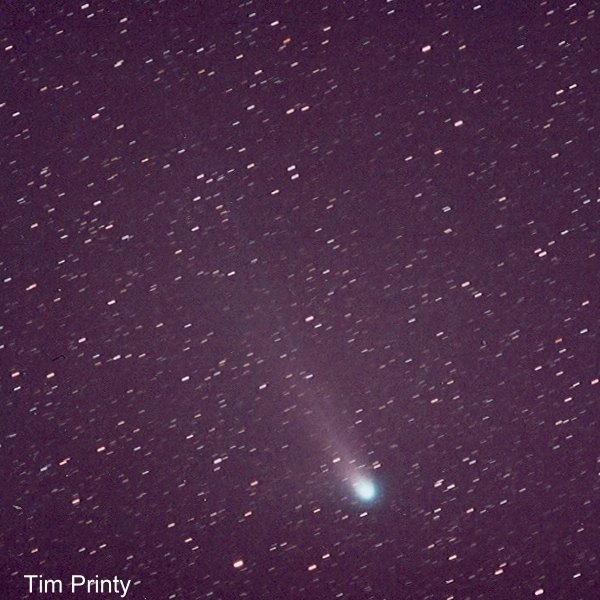
This 50mm F2 shot on Kodak Gold 400 film with a 10 minute exposure, shows the comet in the lower portion of Cancer on May 11th with a faint blue ion tail that appears to stretch about 8-10 degrees.
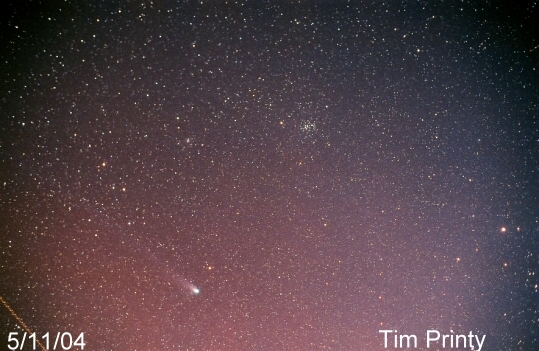
A closeup of the comet using a 200mm F2.8 lens did not record as much of the ion tail as the 50mm. Exposure time was 15 minutes on Kodak Supra 400 film.
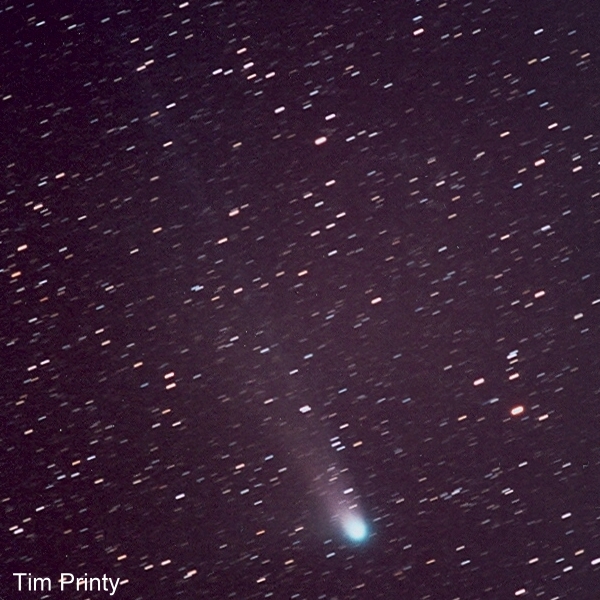
This 400mm F5.6 lens captured the comet on the 11th of May. Exposure time was 25 minutes on Kodak Max 800 film. At this point, the comet appeared to be a minature (very minature) version of Comet Hyakutake in March of 1996. Both exhibited long ion tails but very short dust tails when about 1 AU from the sun.
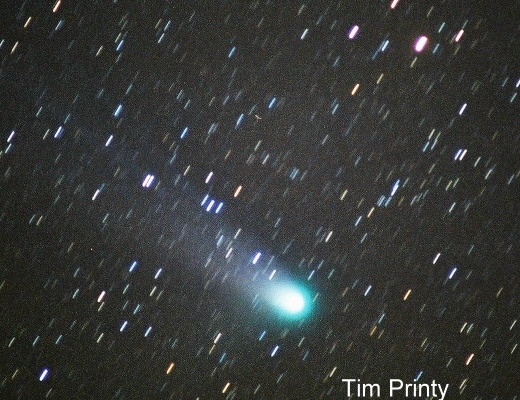
On May 15th and 16th, the comet passed near M44. I took this shot from Lake Massabesic, NH on the 15th using a 135mm F2.8 lens and a 2 minute exposure on Kodak LE 400 film. Light pollution from Manchester masked any details in the comet's tail but it does show the comets central coma and the cluster.
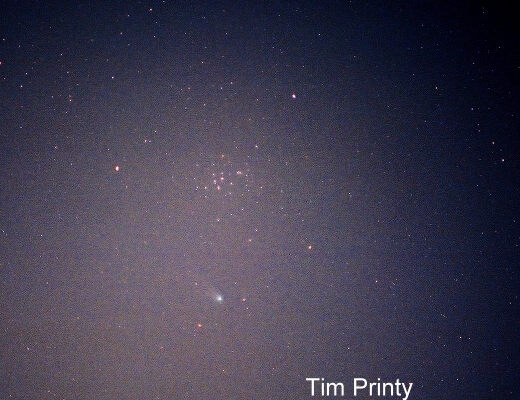
This 200mm F2.8 lens shot was taken on May 19th using Kodak LE 400 film and a 16 minute exposure.
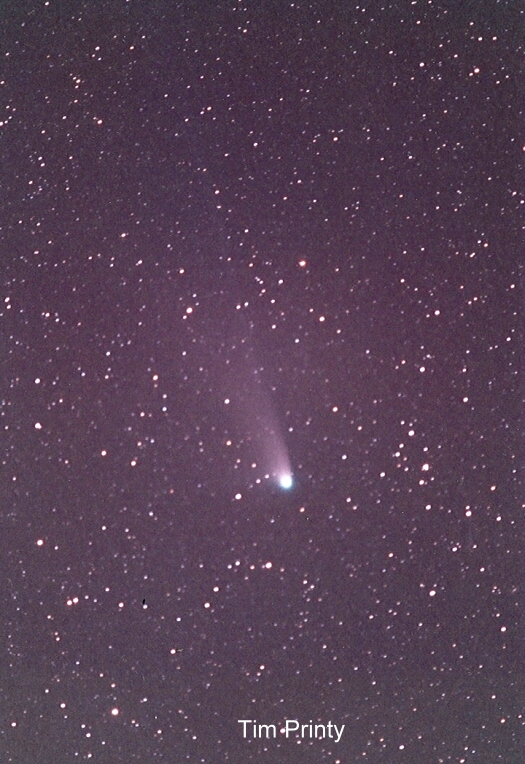
The comet's Ion tail is pretty prominent in this 400mm F5.6 shot on the 19th. Exposure time was 25 minutes using FUJI 800 film. Additionally, there is a faint dust fan/tail to the left of the coma.
